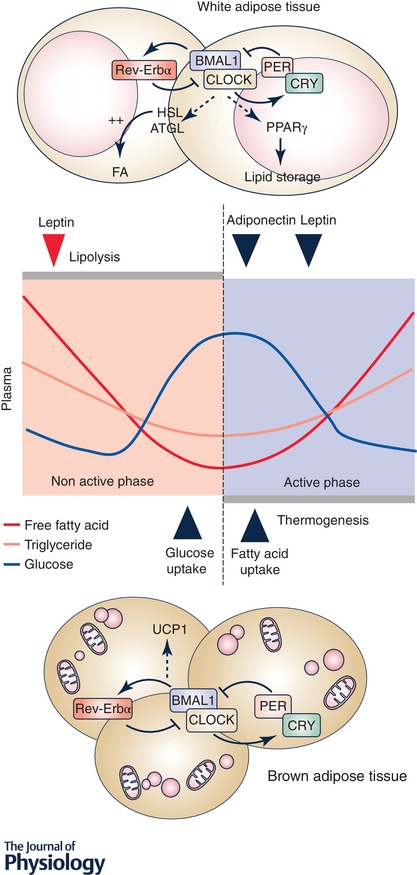Figure 1.

Circadian regulation of metabolic and endocrine function of adipose tissue and the contribution to glucose and lipid oscillations in plasma
White adipocyte tissue lipolysis and lipid storage undergo diurnal oscillations. Adipokines such as adiponectin and leptin are released into circulation in a circadian pattern and peak at different times of the day. Brown adipose tissue displays a circadian rhythm of glucose and fatty acid uptake, with higher thermogenesis activity in the active phase. On the molecular level, the intrinsic clock influences adipocyte function via direct regulation of the expression of several genes, including the lipolytic enzymes ATGL and HSL, the fat storage factor PPARγ and the thermogenic protein UCP1. This schematic representation is mainly derived from experimental evidence from mouse models and therefore it requires additional corroboration in humans. The peak in leptin level in humans is identified by the red triangle.
